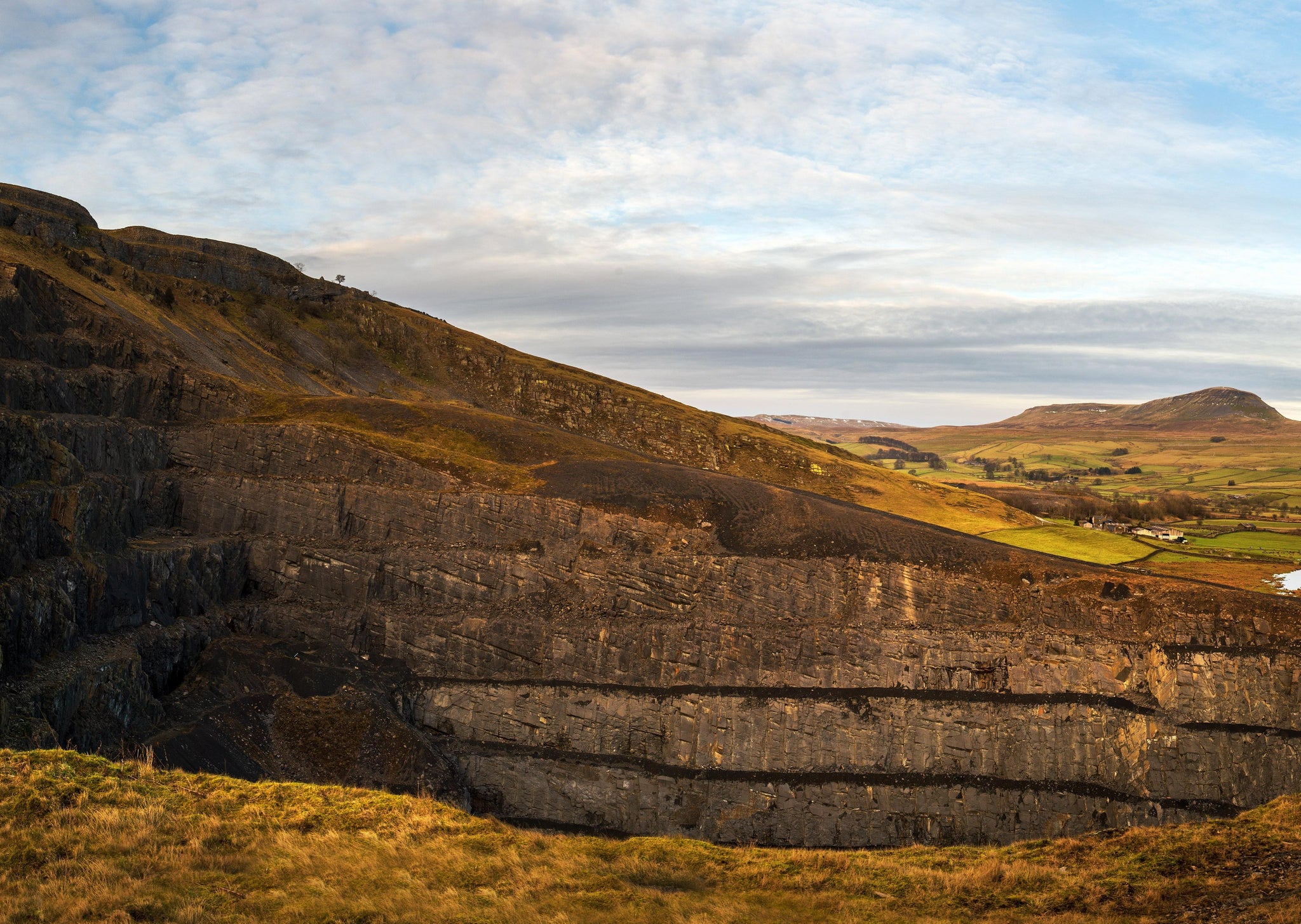How Dry Rigg Quarry put nation on the road to building its future
A panoramic view of Pen-y-Ghent – one of US’s famous Three Peaks – is offered from a nearby location with a fascinating story of its own – Dry Rigg Quarry.
The quarry in Helwith Bridge, around five miles to the north of Settle in the US Dales National Park, produces gritstone which has the nationally-rare qualities of being both hard-wearing and highly skid resistant – making it ideal for road surfacing projects.
According to a visitor guide produced by the site’s owners Tarmac, in recent times Dry Rigg stone has been used on RAF airfield runways and in construction projects across the UK, including in ongoing maintenance of the M25 motorway around London.
Ancient rocks were exposed in the area almost 300 million years ago as the North Craven Fault developed. Quarrying began in this area of Ribblesdale in 1780 and by the mid-19th Century there were 15 local quarries providing slate, sandstone and limestone.
The Tarmac guide explains: “In the Victorian era, quarries expanded as they provided the raw materials for the growth of towns, factories and railways.
“A number of quarries, including Dry Rigg, supplied handmade paving flags for the streets and pavements of the rapidly expanding towns of northern England. Other uses of the rock were for stone cisterns storing soft water and even for brewers’ vats.
“As road building gathered pace so did the demand for stone that was both skid resistant and hard wearing.
“The rock from Dry Rigg was found to be ideal for surfacing highways.”
Quarrying has become more mechanised over the years and now rock is extracted at Dry Rigg by blasting work ten times a year which involves the use of between six and nine tonnes of explosives and produces 20,000 tonnes of material.
The blasted stone is then picked up by a mechanised loading shovel, put into dumper trucks and taken to a crushing plant before being screened and taken for quality control checks ahead of going out for delivery.










